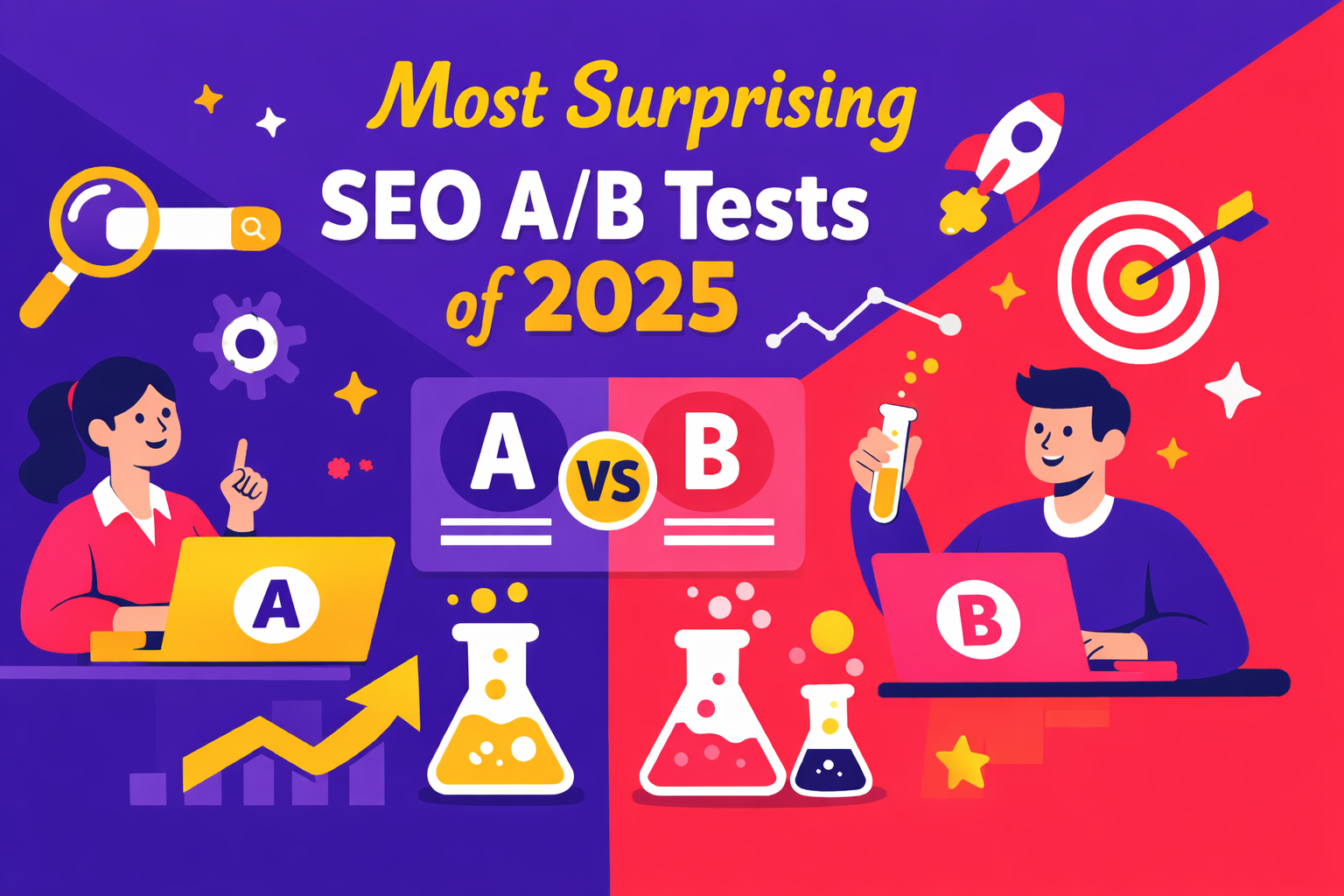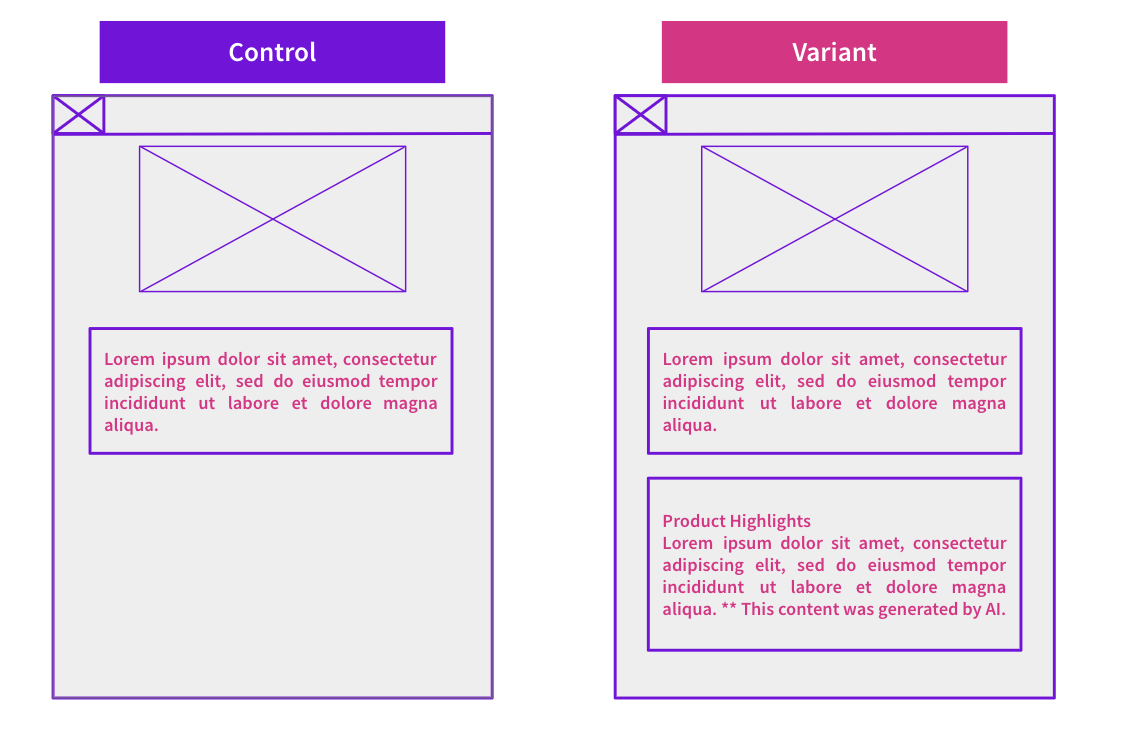Start here: how our SEO split tests work
If you aren't familiar with the fundamentals of how we run controlled SEO experiments that form the basis of all our case studies, then you might find it useful to start by reading the explanation at the end of this article before digesting the details of the case study below. If you'd like to get a new case study by email every two weeks, just enter your email address here.
In this week's #SPQuiz, we asked our followers if they think that Google has reduced the amount of emphasis they place on-page content as a ranking factor in recent core updates.
Read on to see what our followers thought, and our insights into testing content changes.
Poll Results:
 Over a quarter of our followers thought that Google has placed less of an emphasis on content since the latest core update meanwhile three-quarters of our followers thought otherwise. They believed Google still places significant importance on content in ranking factors.
Over a quarter of our followers thought that Google has placed less of an emphasis on content since the latest core update meanwhile three-quarters of our followers thought otherwise. They believed Google still places significant importance on content in ranking factors.
What is Content?
Content is a key element in SEO strategies, often crafted to target prominent keywords, support search visibility, and increase organic traffic. On-page content can take various forms, including images and videos, but typically text. The on-page text helps provide details on the page's subject matter for users and crawlers alike.
This week, we discuss content and whether Google's latest algorithm update has impacted its emphasis on ranking factors. We also highlight ways we can use content to help increase a site's organic traffic and examine some case studies where we experimented with different types of content.
Google's March 2024 New Core Update
In early March, Google announced a new core update targeting low-quality content. Content utilization has always been one of Google's priorities regarding search engine results, ensuring it displays the most relevant content and helpful answers for users based on their search queries.
The popularity of AI-generated content is on the rise, leading to the visibility of more low-quality content and content made specifically for search engines. Google’s latest core update continues to respond to reducing spammy, low-quality content by improving its ranking system to deliver more high-quality and helpful content focused on users. Consequently, it can be argued that Google has emphasized the importance of content in ranking factors.
What are the ways that we use this to increase traffic or CTRs?
Many of our customers run content-centric tests to gauge Google's reaction and adjust their content strategy based on test results. There are a few ways to enhance content:
- High-Quality Content: Crafting relevant content and effectively addressing user queries can increase the likelihood of Google recognizing its value, potentially boosting rankings.
- Keyword Optimization: Strategically integrating high-ranking keywords into on-page content improves user engagement and assists Google in comprehending the page's content. This can help with visibility in the search results as new keywords are now being ranked or existing keywords' rankings have improved.
3 SEO A/B test case studies that show how content impacts SEO performance
Let's compare templated and unique content on web pages. Larger websites often opt for templated content for its scalability and cost savings. However, templated content can still miss SEO opportunities if it doesn’t target more relevant keywords specific to user search queries.
In our comparison test, the unique content variant increased organic traffic by almost 14% by targeting new keywords and improving existing keywords.
With various factors to consider based on the site, unique content may only sometimes have these positive results. We have also conducted experiments to test whether Google prefers unique content over templated content when dealing with localization at scale. One such test involved adding unique localized content to a customer's location listings page. We also ran another test where we updated FAQs with localized content to improve rankings by providing specific information; both tests produced inconclusive results. We’re unsure whether the inconclusive test results were influenced by lower traffic levels or an absence of detectable impacts on rankings. However, mentioning that the results could differ on other websites is essential.
Speaking of inconclusive results, let's discuss a test in which we added ratings and reviews to existing website content. This test aimed to see if Google classifies user-generated content as valuable, thereby positively influencing organic traffic and targeting rich snippets. For this test, we used two different subsets of pages: one with pre-existing content about the location and one without.
The added content included well-populated reviews and a snippet displaying the average rating. This review element was placed above the content on pages with pre-existing content. While many pages did gain rich snippets in the SERPs, both tests yielded no detectable impact, suggesting that users would click through the page regardless of populated reviews. This also indicates that Google doesn’t view user-generated content as a replacement for on-page location-specific content.
Despite Google's recent core update, quality content in SEO strategies remains essential. On-page content that targets relevant keywords and enhances visibility is crucial in driving organic traffic. Google's efforts to refine its algorithm highlight the need for high-quality and helpful content for both ranking purposes and users, regardless of the rise of AI-generated content.
SEO A/B experimentation encourages content optimization to generate improvements to organic traffic, effectively allocating valuable resources. While outcomes may vary, the significance of quality content in driving organic traffic and enhancing search visibility remains undeniable.
How our SEO split tests work
The most important thing to know is that our case studies are based on controlled experiments with control and variant pages:
- By detecting changes in performance of the variant pages compared to the control, we know that the measured effect was not caused by seasonality, sitewide changes, Google algorithm updates, competitor changes, or any other external impact.
- The statistical analysis compares the actual outcome to a forecast, and comes with a confidence interval so we know how certain we are the effect is real.
- We measure the impact on organic traffic in order to capture changes to rankings and/or changes to clickthrough rate (more here).
Read more about how SEO testing works or get a demo of the SearchPilot platform.



